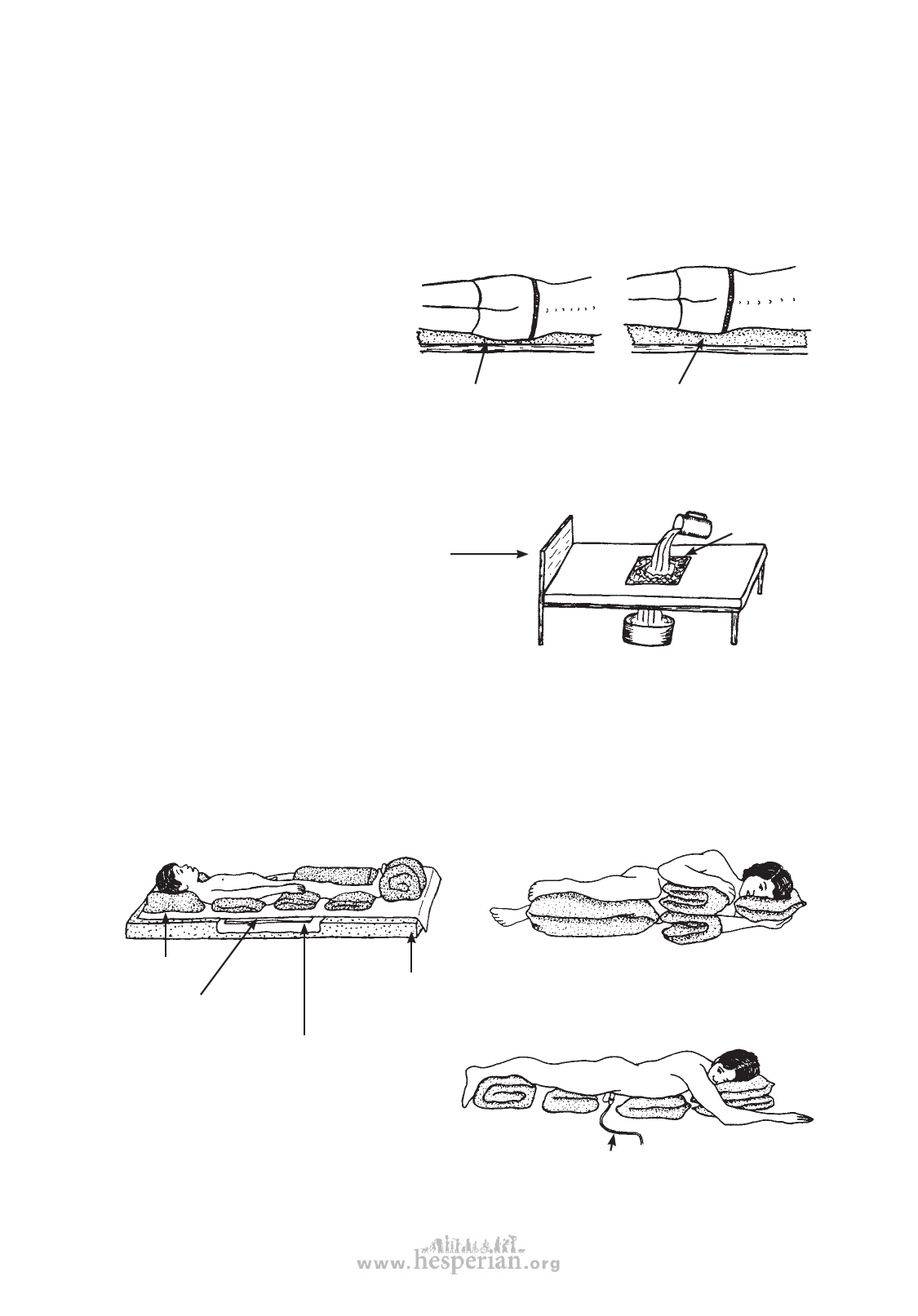
Padding and cushions for lying
PRESSURE SORES 199
To prevent pressure sores, it is essential that the person who has lost feeling lie and
sit on a soft surface that reduces pressure on bony areas.
• It is best to lie on a flat surface with a thick, spongy mattress.
A thick foam rubber mattress often
works well. However, some foam is so
spongy that it sinks completely down
under weight. Then the bony area is
not protected from the hard board.
A firm sponge with very small air
bubbles (microcell rubber)
works well, but is expensive.
This sponge is too soft.
The hip bone is pressed
against the board below.
A ‘waterbed’ (bag-like
mattress filled with water) or air mattress also works well.
In some countries, an excellent mattress material
is made of rubber-coated coconut fiber. Urine can
be washed out by pouring water through it.
Because this material is costly, a rehabilitation
program in Bangladesh cuts a square out of a cheap
mattress and fits in a square of the coconut fiber
sponge.
This sponge is better. It is
firm enough to keep the hip
bone off the board below.
square of
rubber-coated
coconut fiber
• Careful placement of pillows, pads, or soft,
folded blankets can also help prevent pressure
sores. These are especially important in the first weeks or months after a spinal cord
injury when the person must lie flat and be moved as little as possible. Pillows should
be placed to avoid pressure on bony places, and to keep the person in a position that is
healthy and that helps prevent contractures.
BACK-LYING
SIDE-LYING
cotton sheet
thick,
absorbent pad
sponge
to soak up
rubber
urine
plastic or rubber mattress
sheet to prevent
urine from soaking
through
For self-placement of pillows, see p. 184.
BELLY-LYING
urine collection tube (See p. 204.)
disabled village children